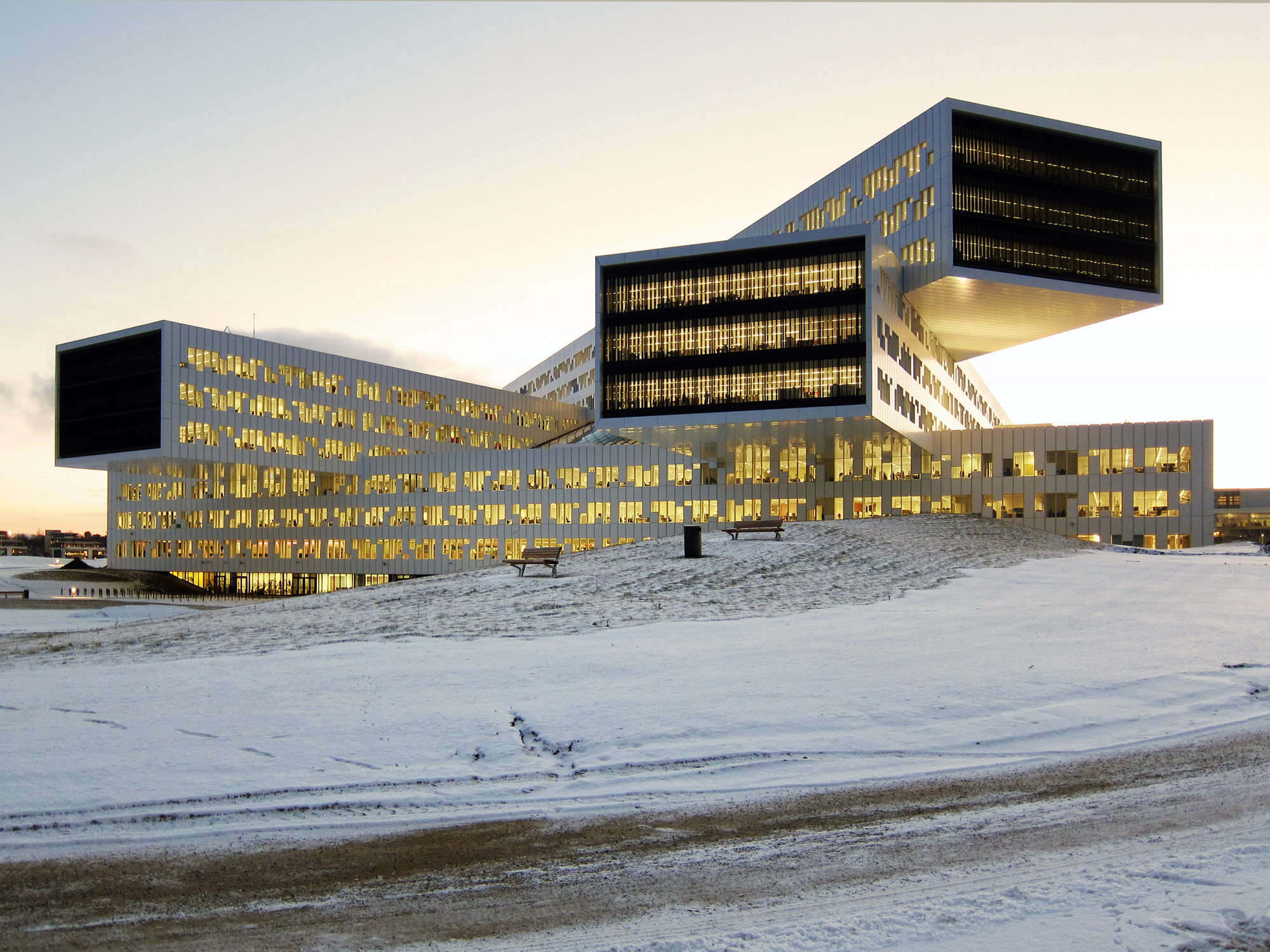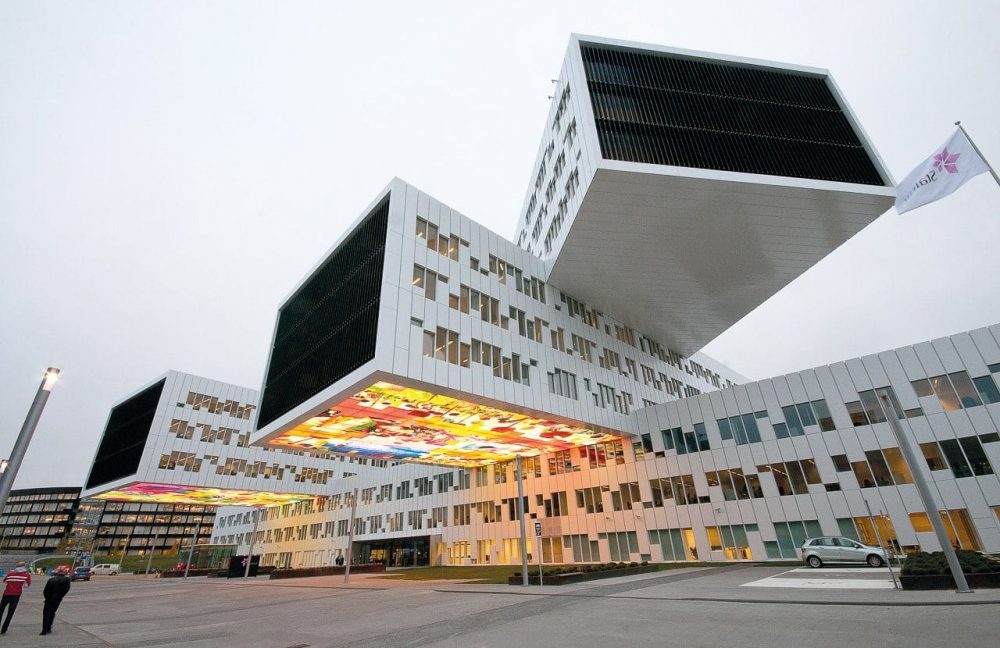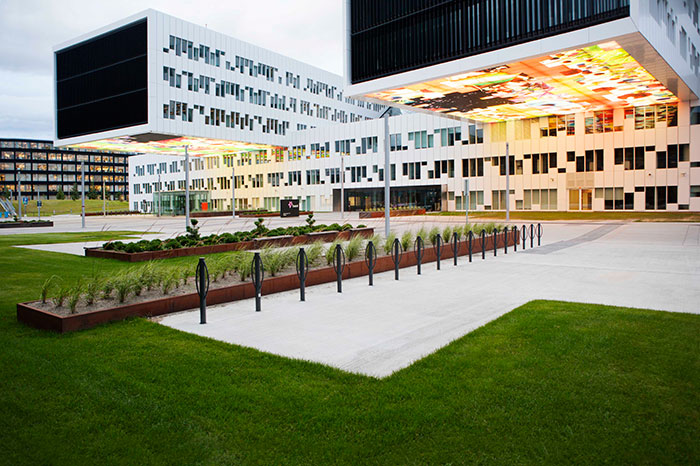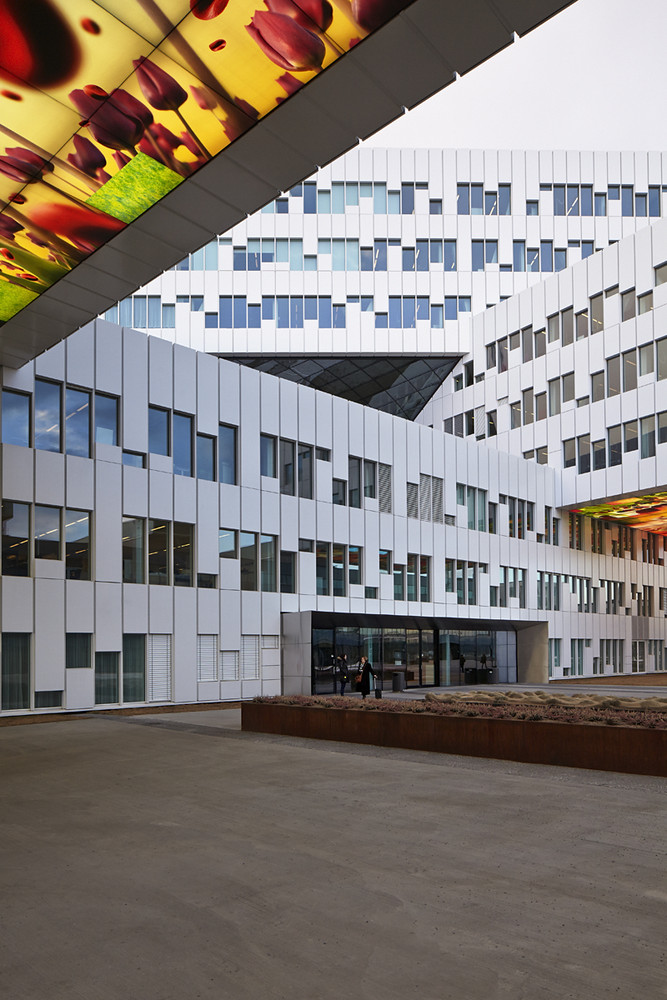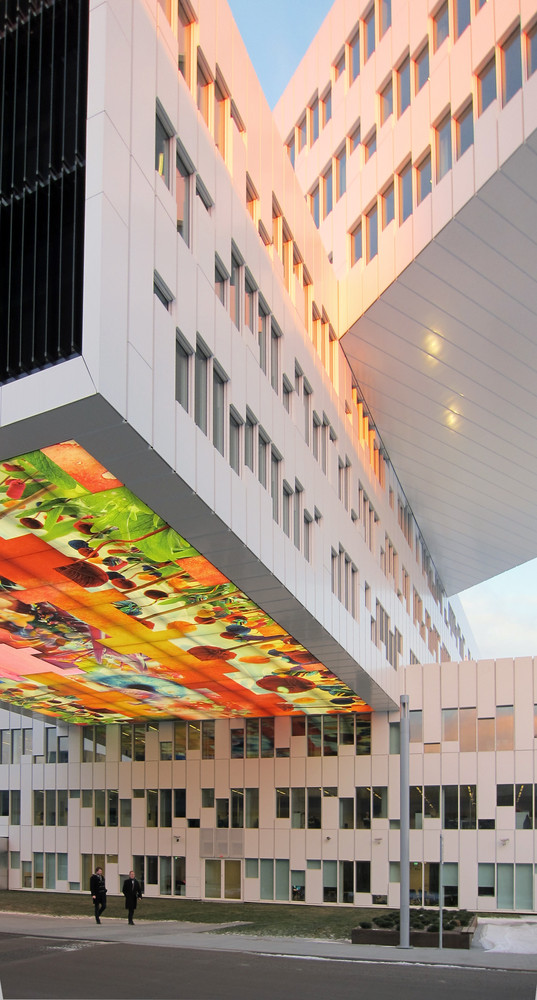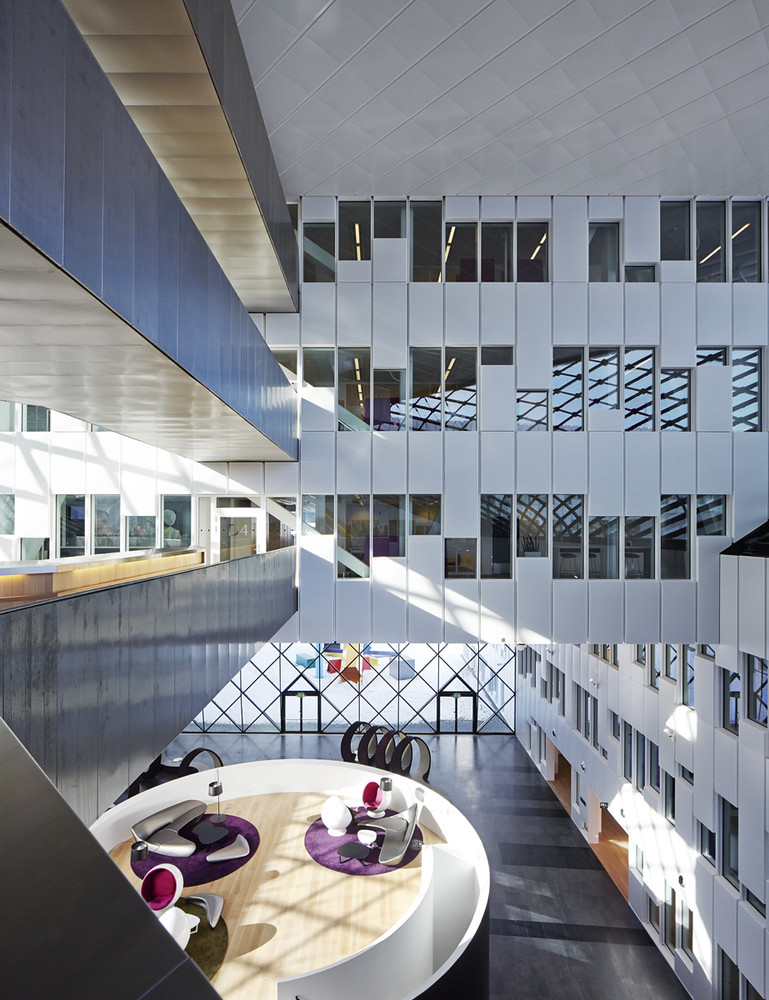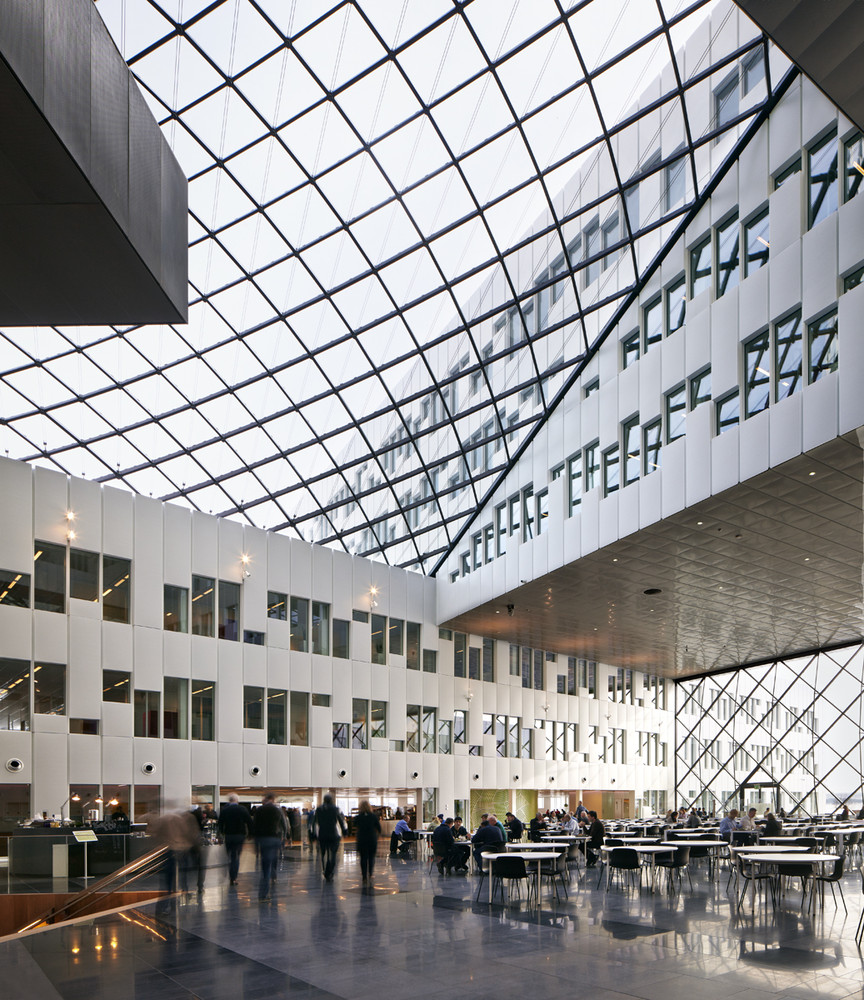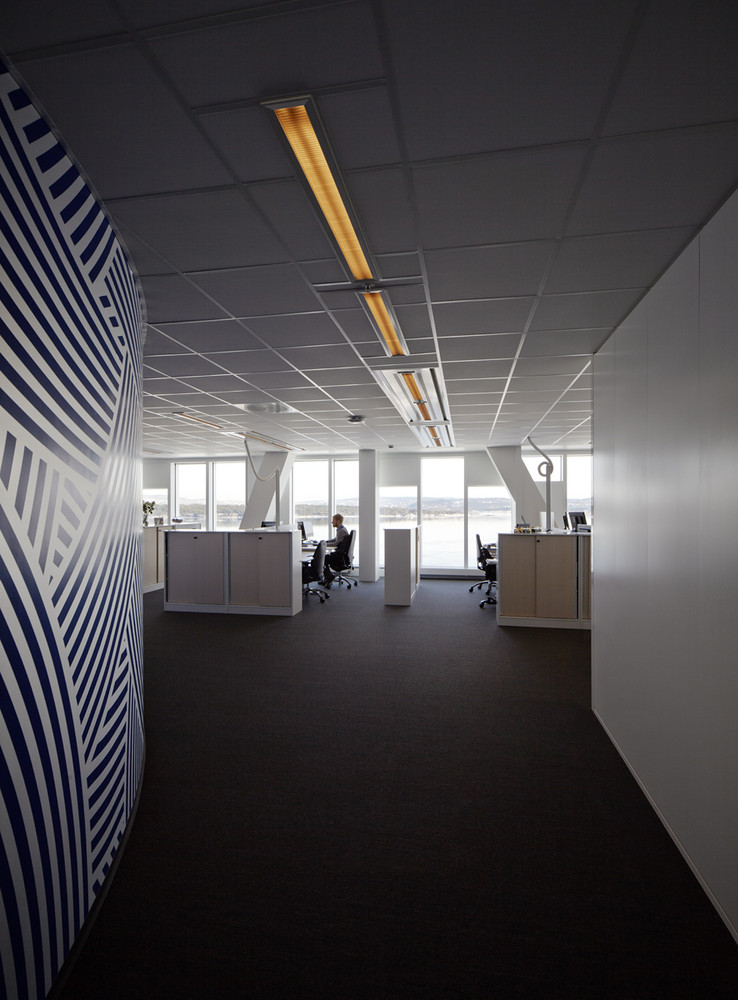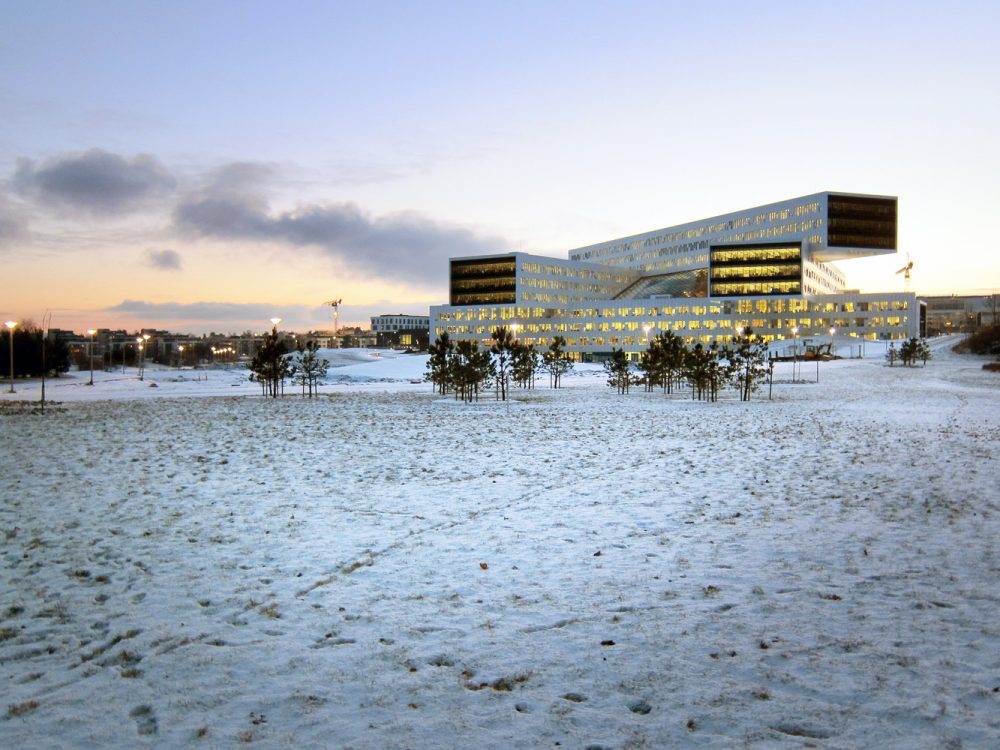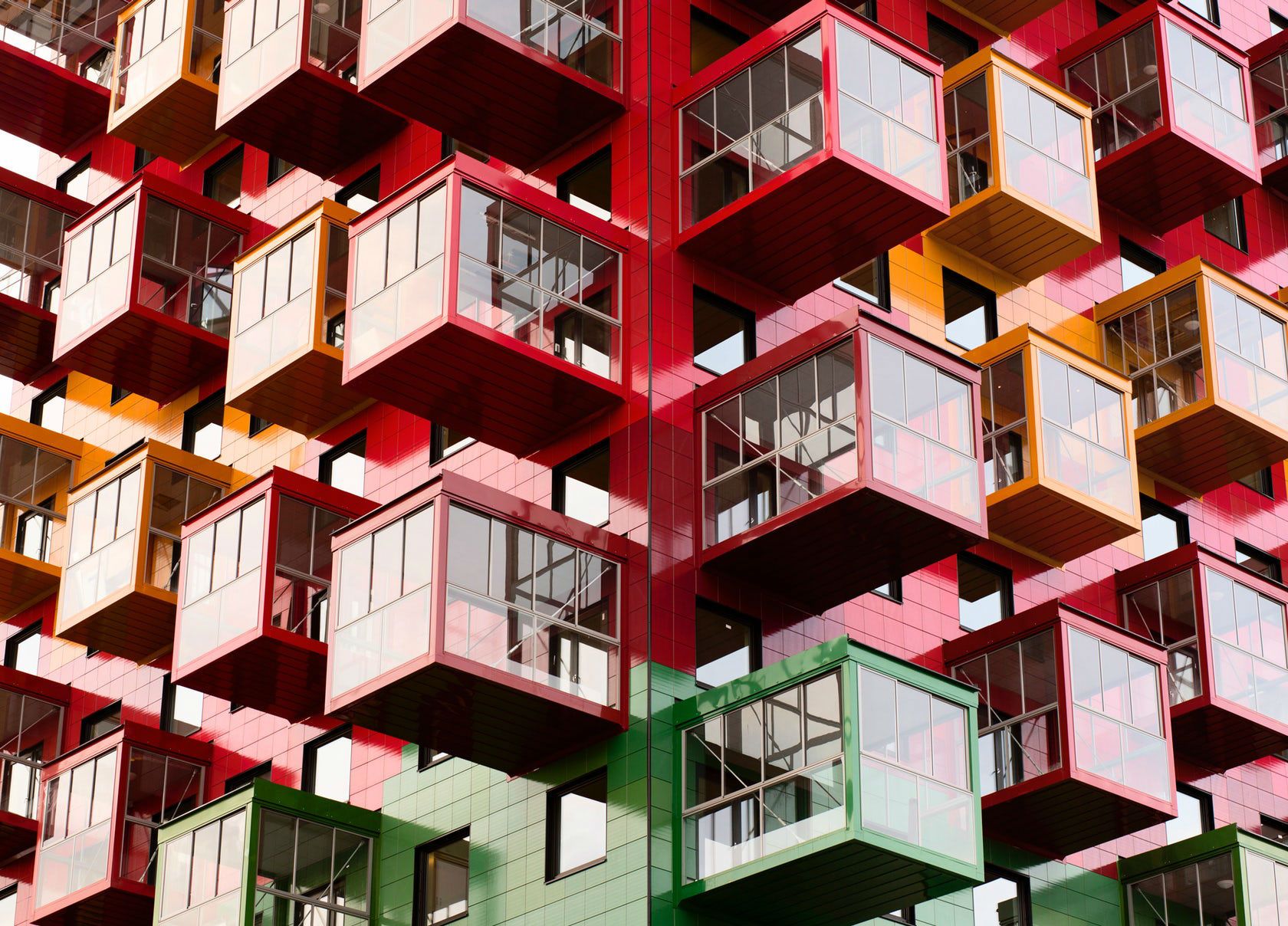Statoil Regional and International Offices
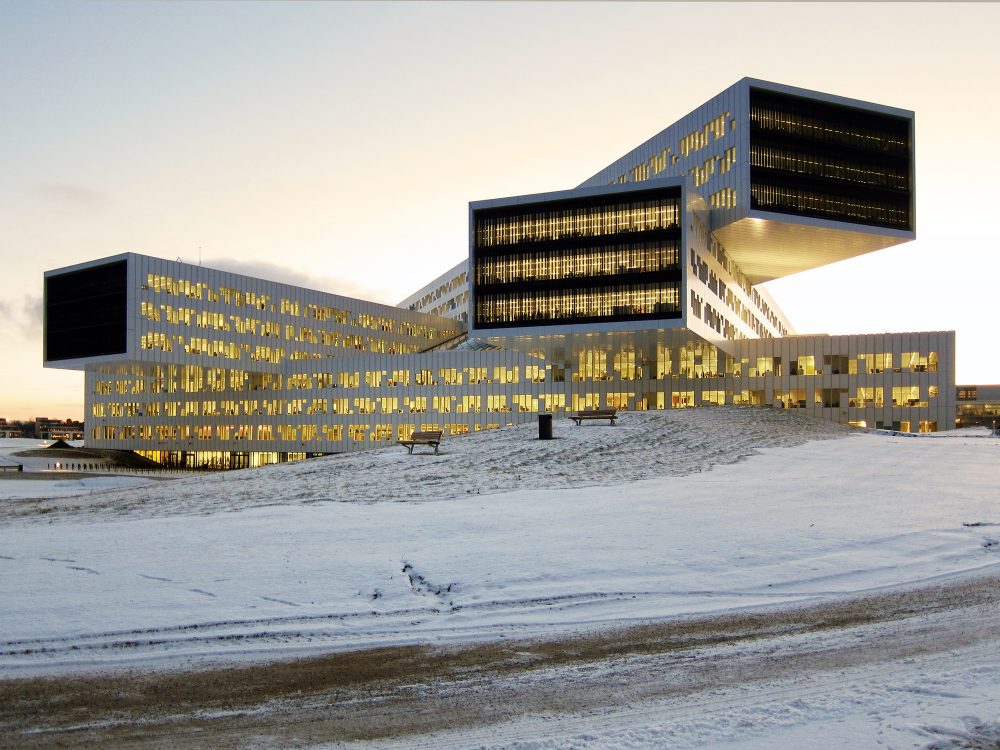
Designed by A-Lab after winning an open competition in 2008, Norwegian energy producer Statoil now enjoys a direct, creative, and massive building representation of prefabricated and individualized standard components resulting in an architecture that expresses both the future and the present environment.
Patterned after the Statoil core values of courage, openness, hands-on, and care, the project was planned and designed after a set of design criteria – of modernity, flexibility, and environmental friendliness. Hence, a design inspired by the classic game of Mikado was formed. Situated above an old airport’s multi-story parking lot, the majority of the site area was dedicated to the development of a five-hectare public park. This is in response to the project’s goal to minimize building footprint throughout the site – all the while offering a flexible, stimulating, and captivating workspace surrounded by views of the fjord, the park, artworks, and the communal atrium space.
Differently stacked side-by-side and atop each other, the overall form was defined by five oblong office modules punctured by a bright and airy atrium at the core – the center of these five giant pick-up sticks. Each oblong office module rises at three stories high, spanning at around 140 meters long and 23 meters wide.
Swiftly completed after 20 months of construction, its very limited construction timeline encouraged a primarily prefabricated construction. From its concrete and steel superstructure to its glazed and façade structures, the majority of its building elements were completed off-site. This required a high degree of precision despite an extremely fast on-site completion – which paid off with a staggering 30-meter cantilever of office modules.
Aside from having a generally fast construction turnaround time, the building also features an environmentally-friendly foundation. Statoil required the building to have an energy class B, having a calculated energy use of only 103 kWh.m2. This was achieved through a variety of techniques such as using heat from a remotely centralized source, 85% energy recycling, and an airtight and well-insulated exterior skin.
The iconic forms of Statoil Regional and International Offices where the interaction between public and commercial spaces is welcomed proves how Norway is indeed a land of democratic design. Behind unconventional forms, the project remains to represent typically Scandinavian values – further emphasizing the importance of the locality and its surrounding environment in a well-executed design.
Category Commercial
